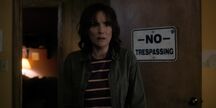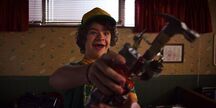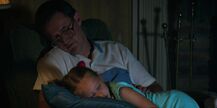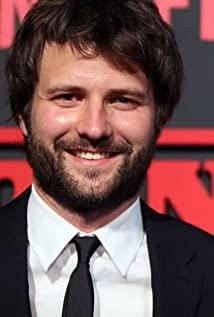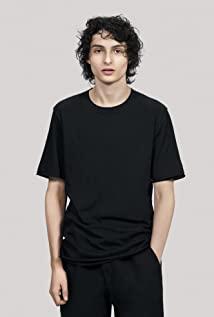If you want to choose the top spot among the many classic film and television symbols of the 1980s, I believe that many die-hard fans will make a long list and argue all night. But looking at the film and television dramas that focus on the word "nostalgia" in recent years, I'm afraid it will be difficult to find a series of IP works like "Stranger Things", which will surely stir up a big splash every time it goes online and set off the topic of discussion.
More than a year after the last Halloween, this Netflix pillar has once again returned to the summer market, releasing the third season full episodes on July 4 (Independence Day). The first four days of broadcast in the first week, the cumulative number of broadcasts has reached 40.7 million , which has no suspense to refresh the viewing record of Netflix's original series, and far exceeds the popular online dramas such as "Umbrella Academy" and "Sex Study Room" produced by the same factory in the first half of the year. . The snowball-like data is enough to confirm its outstanding status at present. Americans will always have an extraordinary interest and fascination with the old science fiction elements such as government experiments, supernatural powers, and inverse worlds.
Cleverly, the climax of the new season was also set on Independence Day in 1985. The mind flayer who once brought the whole town of Hawkins into riots made a comeback, and the official introduction of the Cold Front brought an increase in the amount of information throughout the season. , also heralds the migration of the plot style. After the sweet and dizzying dance at the end of last season, the little protagonists have officially entered their delicate and sensitive adolescence. The budding love has grown like a broken seed, and the strong friendship fortress in the past has been washed away, pushing them away To a more complex, dark, adult world surrounded by all kinds of violence and lies.
Under the premise of this style change, what the audience can most intuitively receive is the upgrade of the screen size in the play. If the main storyline of the first two seasons is still based on children's adventures, with a small amount of supernatural and horror gimmicks, then the third season has become a real monster thriller. From the first episode, the children sneaked into the theater to watch "The Zombies", the whole season has invisibly established some kind of subtle resonance with those ancient B-grade films. There are a lot of heavy mouth scenes that make people physically nauseated, which is full of bad fun compared to the past. In addition to this layer of curious cult packaging, the development and utilization of the age and political background mirrors the fate arc of several characters, making it very similar to a bizarre fable in the mid-1980s, which has become our textual research. The important basis for its completion.
Heart-devouring omen - a mirror image of the changing times
As we all know, the biggest attraction of the "Stranger Things" series is the all-round tribute to the pop culture of the 1980s. The third season still continues this line of thinking: Romero, Carpenter, "Back to the Future"... Although it is relatively bluntly implanted from time to time, it provides people with imaginary bricks and tiles to spy on the rich cultural life that they enjoy as a member of that time and space. Aside from the superficial talisman code, the three seasons of the plot run through, and the screenwriter also faces a new test: how to start from the narrative ontology, so that Hawkins Town, as a microcosm of the development of the North Central region of the United States, is more in line with the swept society at that time. Cultural trend.
So at the beginning of the new season, we saw the high-profile Starcourt Mall (Starcourt Mall) in the previous promotional video. This hypermarket that brings together iconic shops in the 1980s such as The gap, JCPenny, California Hot Dogs, Burger King, etc., parachuted like a UFO. Hawkins. The neon sign with great allure has replaced the board games such as "Dungeon and Dragon" in the first two seasons, and has become a source of interest for young people in their leisure time. Under the impact of the opening of the shopping mall, the grocery stores in the town closed one after another. People who were dissatisfied with the cession of public areas surrounded the mayor's office to denounce it. Unconsciously, this opened the curtain of the whole season of the story.
This projection of the trap of consumerism is nothing less than a vivid portrayal of the economic recovery of the United States after the mid-1980s. The economic ecology of cities and towns dominated by private individuals has been hit hard, which has brought a series of chain effects to the pace of life and neighborhood relations in the town.
In the first episode, Nancy, as an intern at the Hawkins Post, proposed that Star Court be the focus of the report. Editor-in-chief Tom immediately wrote the title of the article "The Death of a Small Town" - although it was only a frivolous joke, it was In fact, similar tragedies of decline were not uncommon at the time. The complex, one-stop service monopolized by a large consortium not only obliterates the original diversity of the local landscape, but also constrains every employee recruited by it, just as the ice cream parlour worker Steve complains about the stupid sailor hat,” "Hidden" his proudest hair: "Screw the company policy!"
In the third episode, when the "Ice Cream Squad" cracked the Soviet military intelligence, and the group sneaked into the secret base, the satire of capital civilization took a back seat, and the political game with conspiracy theories was exposed to the spotlight. . Based on the external reality, this seems to be a reasonable choice. After the superpower research institute was destroyed in the first two seasons and the entrance to the reverse world was closed, the main creative team urgently needed to build a new villain force to recall the monsters from the nest. ghost. The increasingly tense US-Soviet relations under the Reagan administration in the 1980s were naturally brought into the first consideration.
But in the eyes of sharp-eyed audiences, this setting contains many logical loopholes, not to mention whether the Soviet Union's re-opening of the "reverse world" is credible, and even the military paid a lot of money to buy land in order to hide people's eyes and ears. , The practice of building a shopping mall is equally exaggerated and untenable. Including the portrayal of the Soviet side in the play, it has not yet jumped out of the outdated Hollywood stereotype. Compared with the controversial and glorious "Chernobyl" not long ago, it has even gone several levels off the line. The primary school students came out out of thin air, which can be said to be a more conspicuous flaw in the third season script.
It was the persevering spirit of the Soviets that resurrected the dormant mind flayers. This giant beast assembled from pus, blood and rotten flesh was born out of the cult classic "The Thing", just as the latter has been interpreted by many cultural studies scholars as a product of doubt and distrust in a closed environment since its inception. The big boss in the third season can also be regarded as a metaphor that symbolizes the changes of the times.
It uses tentacles to manipulate the residents of the town and assimilate them into their own puppets. This alternative way of "hunting" not only reflects the evolution of people's mentality from anxiety and anger to giving up resistance to numbness in the face of external capital invasion, but also During the ideological confrontation during the Cold War, people were coerced by power and had no concrete representation of freedom of voice. Regardless of the bustling underground shopping malls or the violent Soviet people, they all exist as unfriendly "enemy" to the people. Therefore, this intense anxiety condenses into spores of fear, spread under the surface of calm, and finally caused a devastating disaster.
At the end of the whole season, as the experimental base and the Star Court mall were turned into ruins, the wildly rampant monsters lost their power supply, instantly paralyzed and collapsed, and the haze of sin was temporarily removed. But the real crisis is far from over, the shadow of the mind flayer still lingers around the town, indicating the unimaginable price people will continue to bear when their homes are looted and the truth is hidden.
The disappearance of childhood - the broadening and fusion of typification
The stable audience relationship of the "Stranger Things" series is inseparable from its inclusive and broad user positioning. From the beginning of the project's implementation, Netflix has played a banner for all age groups. Whether it is still developing little ghosts or people who have entered middle age, they can pick up memories of the warm and nostalgic atmosphere of the past. Especially the group adventure plot of the first two seasons can be called the children's version of "Ghostbusters", and there is no lack of the flashy characteristics of the early Spielberg movies. .
However, as the Duffer brothers, the heroes behind the play, said in an interview, the children's age growth is synchronized inside and outside the play. With their transformation in the past few years, the script must be adjusted accordingly. In addition, the newly incorporated branches such as Soviet military experiments and campus love have further diluted the proportion of outdoor adventures, and the elements of suspense, thriller, and reasoning have been enlarged, making this drama, which originally focused on fantasy and creativity, look less. some "pure".
A direct benefit of the expansion of the narrative structure is that the plot has more twists and turns, and it is no longer criticized as bland and lacking in ups and downs as in the second season. Especially after the clues are gathered in the second half, the rhythm is as fast as a roller coaster, which is enough to keep the audience's eyes firmly on the line, allowing people to gain an incomparably smooth viewing experience. However, this also means that before the "main dish" is brought to the table, the audience must get through the warm, boring, and slightly routine foreshadowing in the early stage.
In the first half of the third season, each independent quest line was unfolded one after another and interlocked, and this parallel narrative would be particularly long without the support of children's natural aura. Although in a large number of scenes with serious water injection, the vague outlines of monsters occasionally emerge, which makes adrenaline surge, but similar tension and excitement are instantly annihilated in the sweet puppy love troubles and the slow-paced mystery detective drama.
Perhaps the writers have forgotten that the audience is most interested in those old-fashioned adventure plots, whose magnet-like attraction, after repeated confirmation, is enough to break through the limitations of different types of paradigms and evoke emotional resonance for all. Therefore, even if the scheduling level of the last two episodes is higher and the word of mouth is brighter (the eighth episode "Battle of the Stars" won the whole series with an imdb score of 9.7 ), it is difficult to dilute the fact that the whole season is uneven.
Of course, the Youth League will always grow up, and there are times when the candy-colored childhood runs out of balance. Just like the slogan on the official poster, "One summer can change everything." At the end, the Joyce family sold their old house and left the town. Will, Jonathan and El who lost the shelter of Hopper had to say goodbye to their partners. "Moving" and "Saying goodbye", corresponding to these actions, are often the maturity of the character's mood.
In El, the traces of change are most evident. She, who had a taste of love for the first time this season, began to learn how to dress under the guidance of Max, who has a sassy personality, and said to her boyfriend who annoyed her: "I dump your ass (I dumped you)!", compared with these pediatric plots , what is really meaningful is the ending - the disappearance of her superpower made her degenerate from the savior who rushed to the front of the team and protected everyone to an ordinary girl, but also retrieved her long-repressed subjectivity. And Mike, Will, Dustin and Lucas will also start their new journeys after this summer.
The kids are rising fast, and Billy, the school bully who has been rampant since the second season, chooses to exit the scene in a different way. When El awakened one of the cleanest memories of his childhood, he stood up to block the tentacles of the mind flayer and completed his heroic and glorious atonement, which is beyond regret. The metaphor behind it couldn't be clearer: the only thing that can defeat the devil is the softness in everyone's heart and the conscience that has not yet collapsed.
Many people are deeply puzzled by the viral spread of "Stranger Things" around the world. After all, compared with the traditional American dramas that pursue cutting-edge audiovisuals and move closer to big-budget movies, it is like a platter of pop culture symbols intertwined in the 1980s. Some The core theme is even simpler: friendship and growth, the struggle between good and evil, a few key words are arranged together, which happens to sum up its relationship with those who seem to be cheap and rough in workmanship. , but spared no effort to promote the most essential commonality between the sequences of works of truth, goodness and beauty.
Perhaps we can say that it is wrapped under the dazzling easter eggs, this hidden layer of deja vu, and the digestion, absorption and reprocessing of classic propositions, make people forever hold the story that happened in Hawkins town. There is 100% enthusiasm. And this is also a sincere and warm hymn dedicated to that creative era.
It's obvious that "Stranger Things" is going downhill, but as a variant of the 80s cultural industry formula in the new era, it still has the good genes given by its predecessors, throwing other hard-working competitors out of a few figures , of course. With their developed business acumen and precise visual intuition, the Duffer brothers have combined various video games, card games, comics, and video tapes to create a time machine for those who like to miss the old days. Cast a tender glance with sad times.
It's just that Netflix, as the first brother of streaming media, even if he is proficient in data algorithms, familiar with the golden door, and has tasted the sweetness of nostalgic cards several times, he should understand the truth of "get it as soon as you see it". It is rumored that the fourth season will draw a stop for the entire series. At that time, the suspense left by this season (Is Hopper alive? Can El get his power back?) will go where, and the protagonists who have countless fans will meet again. How will it end?
The real fantasy cannot just be "seen", but should affect the audience's nerves and be spontaneously touched and perceived by people. It is hoped that this popular theme park will become a text worthy of writing after closing its doors, just like the object it pays tribute to, or the sparks that splash out, illuminating the coldest and darkest corners of everyone's heart.
View more about Chapter One: Suzie, Do You Copy? reviews



